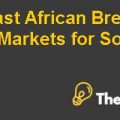
ADA # 2: Final Group Project
Research Objective:
- To critically evaluate the affect of advertising variables i.e. News, Print, Broad and Outdoor on total sales of vodka industry.
- To identify factors that impact of price per unit on the total sales of the vodka company.
- To determine how tiers along with domestic versus non-domestic brands impact the vodka industry.
- To evaluate the impact of advertising dollars spent to predict sales of the company.
Research plan and Methodology:
It is important to analyze the approach you get to know the effects of one variable to another. This section of the report aids information about the procedure and test that has been used in the project. In order to find out the trends in the vodka industry, method of survey research has been used to find the affect of advertising variables on total sales of the vodka industry. Data has been collected through survey, and the findings will be calculated from the data that has been extracted from it. Furthermore, the data has been collected from 30 brands of vodka for around fifteen years. In addition to that, correlation and regression analysis have been done to find a relationship between one variable or another. The main function served by correlation analysis is to analyze whether the two variables are fluctuating with each other or not. In regression analysis, the dependence of one variable on another has been evaluated. Further, ANOVAs function in R has been used as well to analyze and compare the scores of two models or variables.
Various variables have been used to analyze the impact of the overall environment of the Vodka industry. These variables include total sales along with all advertising media variables i.e. Print, News, Broad and Outdoor. Furthermore, price per unit, GDP, domestic and non-domestic variables have been used to analyze their impact on total sales. Moreover, unit sales of tier1, tier2 and tier 3 have been used as well. Finally, dollar sales have been analyzed with all the advertising media.
Findings from the data:
Total sales predicted by Print, News, Broad and Outdoor:
|
Model Summaryb |
|||||
| Model |
R |
R Square |
Adjusted R Square |
Std. Error of the Estimate |
Durbin-Watson |
| 1 |
.782a |
.611 |
.606 |
1036.315 |
.411 |
| a. Predictors: (Constant), media, broad, news, outdoor
b. Dependent Variable: total sales |
|||||
Figure 1 model summary
|
ANOVAb |
||||||
| Model |
Sum of Squares |
df |
Mean Square |
F |
Sig. |
|
| 1 | Regression |
5.260E8 |
4 |
1.315E8 |
122.445 |
.000a |
| Residual |
3.351E8 |
312 |
1073949.331 |
|
|
|
| Total |
8.611E8 |
316 |
|
|
|
|
| a. Predictors: (Constant), media, broad, news, outdoor
b. Dependent Variable: total sales
|
||||||
Figure 2 Anova
|
Coefficientsa |
||||||
| Model |
Unstandardized Coefficients |
Standardized Coefficients |
t |
Sig. |
||
|
B |
Std. Error |
Beta |
||||
| 1 | (Constant) |
872.698 |
66.047 |
|
13.213 |
.000 |
| news |
-.198 |
.125 |
-.061 |
-1.588 |
.113 |
|
| outdoor |
.808 |
.142 |
.243 |
5.704 |
.000 |
|
| broad |
.651 |
.042 |
.578 |
15.563 |
.000 |
|
| media |
.067 |
.011 |
.260 |
6.084 |
.000 |
|
| a. Dependent Variable: total sales
|
||||||
Figure 3: coefficients
|
Residuals Statisticsa |
|||||
|
|
Minimum |
Maximum |
Mean |
Std. Deviation |
N |
| Predicted Value |
743.68 |
10026.21 |
1420.71 |
1290.178 |
317 |
| Residual |
-5963.447 |
4229.452 |
.000 |
1029.735 |
317 |
| Std. Predicted Value |
-.525 |
6.670 |
.000 |
1.000 |
317 |
| Std. Residual |
-5.754 |
4.081 |
.000 |
.994 |
317 |
| a. Dependent Variable: total sales | |||||
Figure 4: Residuals statistics
After removing news advertising variable:
|
Model Summaryb |
|||||
| Model |
R |
R Square |
Adjusted R Square |
Std. Error of the Estimate |
Durbin-Watson |
| 1 |
.780a |
.608 |
.604 |
1038.830 |
.415 |
| a. Predictors: (Constant), media, broad, outdoor
b. Dependent Variable: total sales |
|||||
Figure 5: model summary removing advertising variable
|
ANOVAb |
||||||
| Model |
Sum of Squares |
df |
Mean Square |
F |
Sig. |
|
| 1 | Regression |
5.233E8 |
3 |
1.744E8 |
161.635 |
.000a |
| Residual |
3.378E8 |
313 |
1079167.687 |
|
|
|
| Total |
8.611E8 |
316 |
|
|
|
|
| a. Predictors: (Constant), media, broad, outdoor
b. Dependent Variable: total sales
|
||||||
Figure 6: anova (after removing advertising variable)
|
Coefficientsa |
||||||
| Model |
Unstandardized Coefficients |
Standardized Coefficients |
t |
Sig. |
||
|
B |
Std. Error |
Beta |
||||
| 1 | (Constant) |
857.511 |
65.510 |
|
13.090 |
.000 |
| outdoor |
.788 |
.141 |
.238 |
5.572 |
.000 |
|
| broad |
.650 |
.042 |
.577 |
15.496 |
.000 |
|
| media |
.062 |
.011 |
.239 |
5.864 |
.000 |
|
| a. Dependent Variable: total sales
|
||||||
Figure 7: coefficients (after removing advertising variables)
|
Residuals Statisticsa |
|||||
|
|
Minimum |
Maximum |
Mean |
Std. Deviation |
N |
| Predicted Value |
857.51 |
9995.48 |
1420.71 |
1286.853 |
317 |
| Residual |
-5930.095 |
4254.013 |
.000 |
1033.887 |
317 |
| Std. Predicted Value |
-.438 |
6.663 |
.000 |
1.000 |
317 |
| Std. Residual |
-5.708 |
4.095 |
.000 |
.995 |
317 |
| a. Dependent Variable: total sales
|
|||||
Figure 8: residuals (after removing advertising variables)
R-square predicts the dependence of dependent variable over other independent variable. Regression analysis has been done to analyze the impact of advertising variables that are Print, News, Broad and Outdoor on total sales in the Vodka industry. R-square in the model summary is 0.611 that means 61% of the variables are correlated with each other. R square of 61.1% indicates that in case advertising media has changed by 61.1% then total sales will change by 61.1% as well.
From the Anova table, one can see that the connection between the predictors and dependent variable is very significant.
The four predictors used in the model ..................
This is just a sample partial case solution. Please place the order on the website to order your own originally done case solution.













